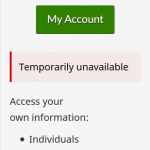 It’s time for another round of updates for your Windows computers. Earlier today Microsoft published fifty-eight bulletins, with associated updates, addressing eighty vulnerabilities in Flash, .NET, Office (2010, 2013, 2016, and 2019), SharePoint, Visual Studio, and Windows (7, 8.1, 10, and Server). Ten of the vulnerabilities are flagged as having Critical severity.
It’s time for another round of updates for your Windows computers. Earlier today Microsoft published fifty-eight bulletins, with associated updates, addressing eighty vulnerabilities in Flash, .NET, Office (2010, 2013, 2016, and 2019), SharePoint, Visual Studio, and Windows (7, 8.1, 10, and Server). Ten of the vulnerabilities are flagged as having Critical severity.
Get the full details directly from the source: Microsoft’s Security Update Guide.
Interestingly, there are no updates for any version of Internet Explorer this time around. I don’t think that’s ever happened before.
What you need to do
Windows 10
Unless you’re running one of the more recent major releases of Windows 10, and you’ve configured it to delay updates, you’re going to get the new updates within the next day or so.
If your version of Windows 10 has settings that allow you to delay updates, I strongly recommend that you use them. Given Microsoft’s recent track record with updates, which includes rushing out fixes for a sadly long series of problematic updates, it seems like the smart choice.
Windows 8.1
It’s been a while since Microsoft broke Windows 8.1 with a bad update, but if you’re at all wary about these things (as am I), you should make sure Windows Update is not configured to install updates automatically, then wait a few days before installing them manually with Windows Update.
The more adventurous among you may choose to install the new updates right away via Windows Update, or even (shudder) configure Windows Update to do it all automatically.
Windows 7
If the organization you work for has paid for extended updates, your Windows 7 computer will get any applicable updates, but your IT folks probably do that for you anyway.
The rest of the world’s Windows 7 users can only wonder how much less secure their computers are without the new updates.
 boot13
boot13 Canadians: if you’ve tried to access your CRA accounts recently, you probably noticed that you can no longer log in. That’s because normal access has been disabled while the CRA works to undo the damage caused by two recent attacks on their services.
Canadians: if you’ve tried to access your CRA accounts recently, you probably noticed that you can no longer log in. That’s because normal access has been disabled while the CRA works to undo the damage caused by two recent attacks on their services. Earlier this week Adobe released
Earlier this week Adobe released  Earlier this month, Mozilla released a new version of its free — and still excellent — email client:
Earlier this month, Mozilla released a new version of its free — and still excellent — email client:  Oracle recently released its
Oracle recently released its  Mozilla released
Mozilla released  A new version of Flash was released by Adobe earlier this week.
A new version of Flash was released by Adobe earlier this week.